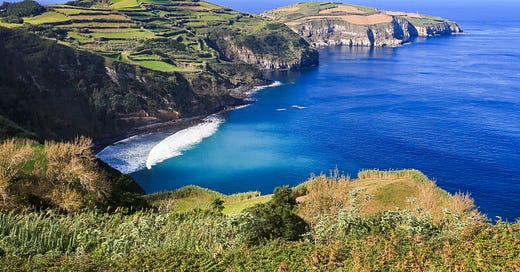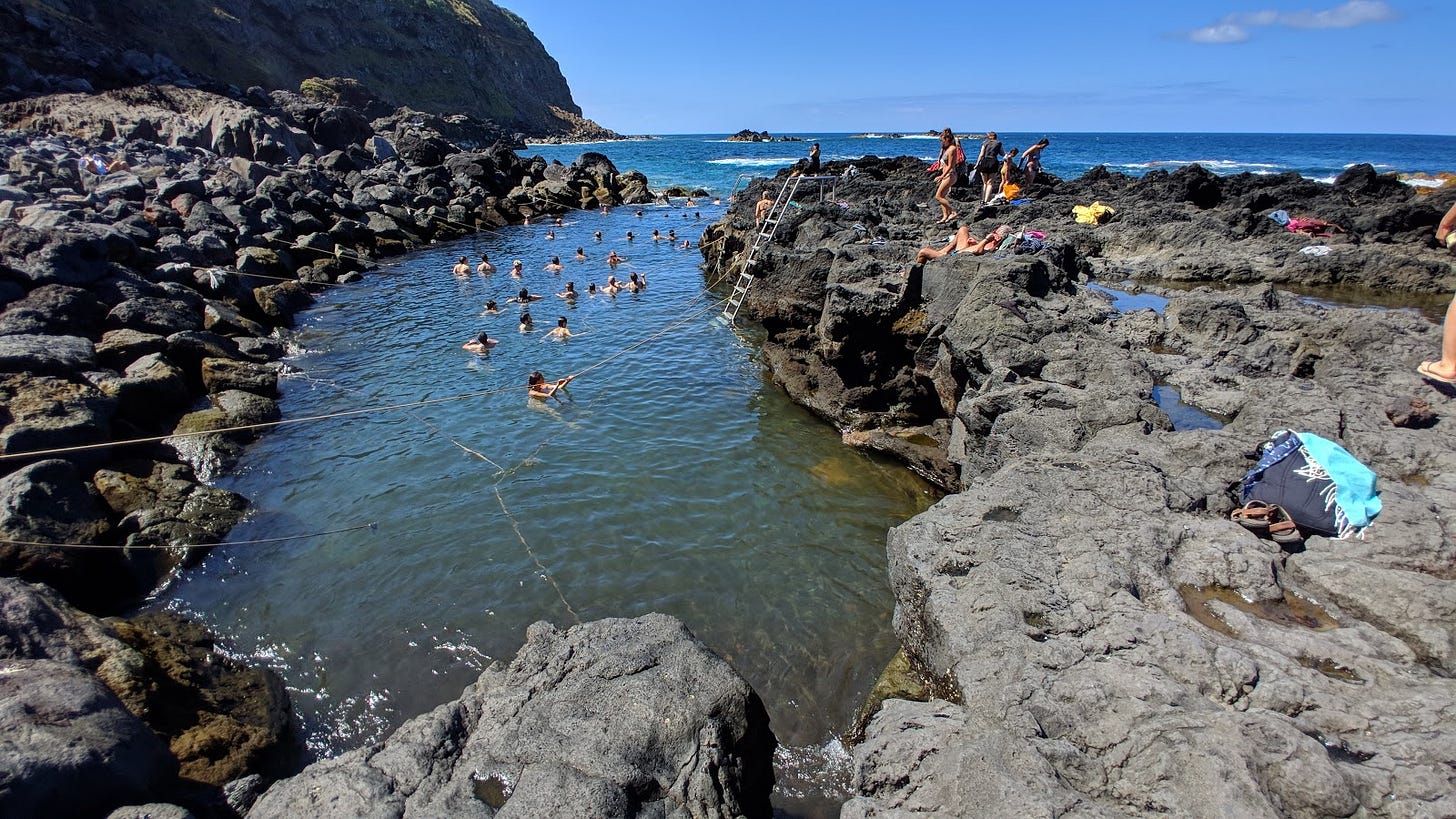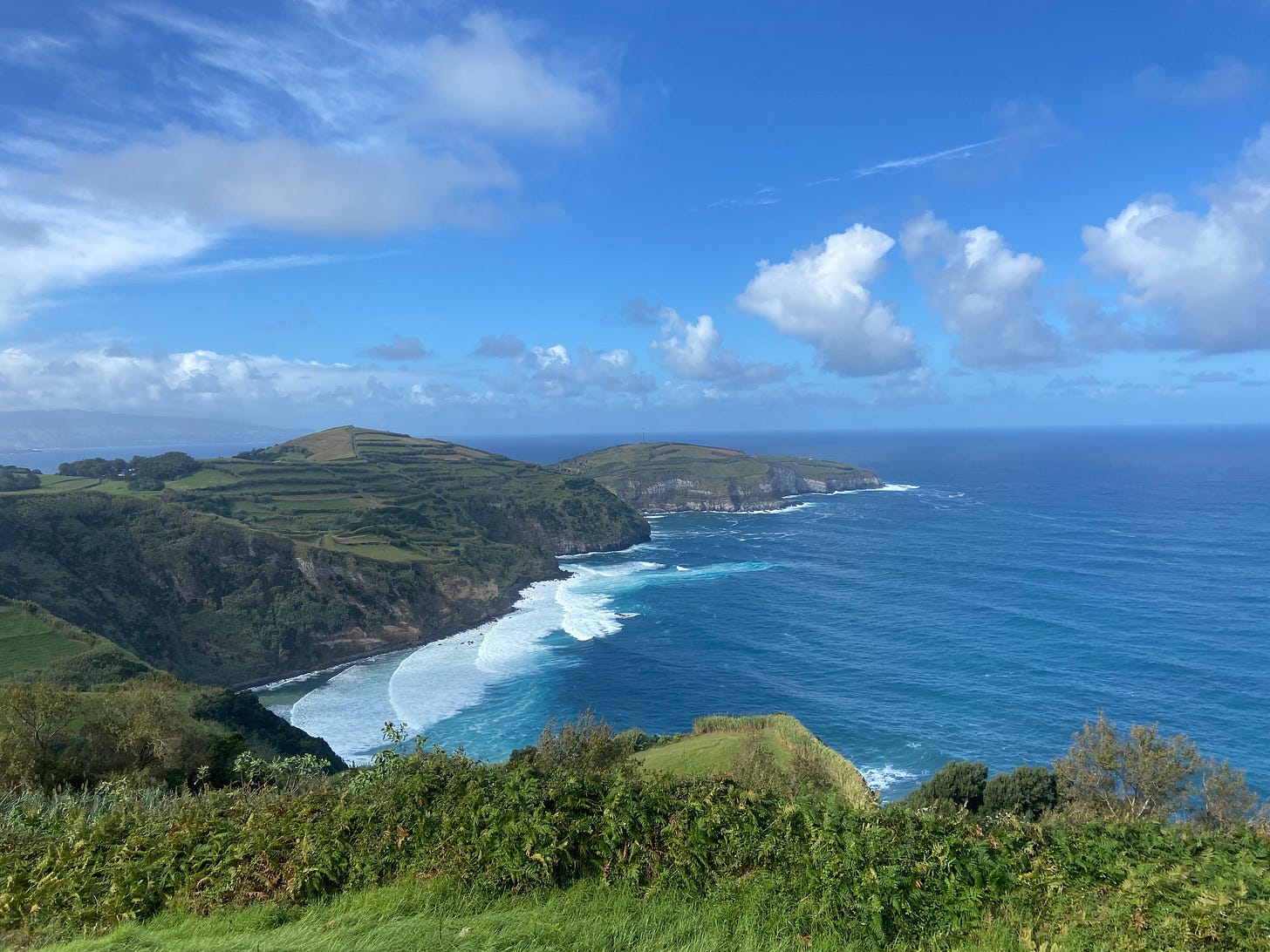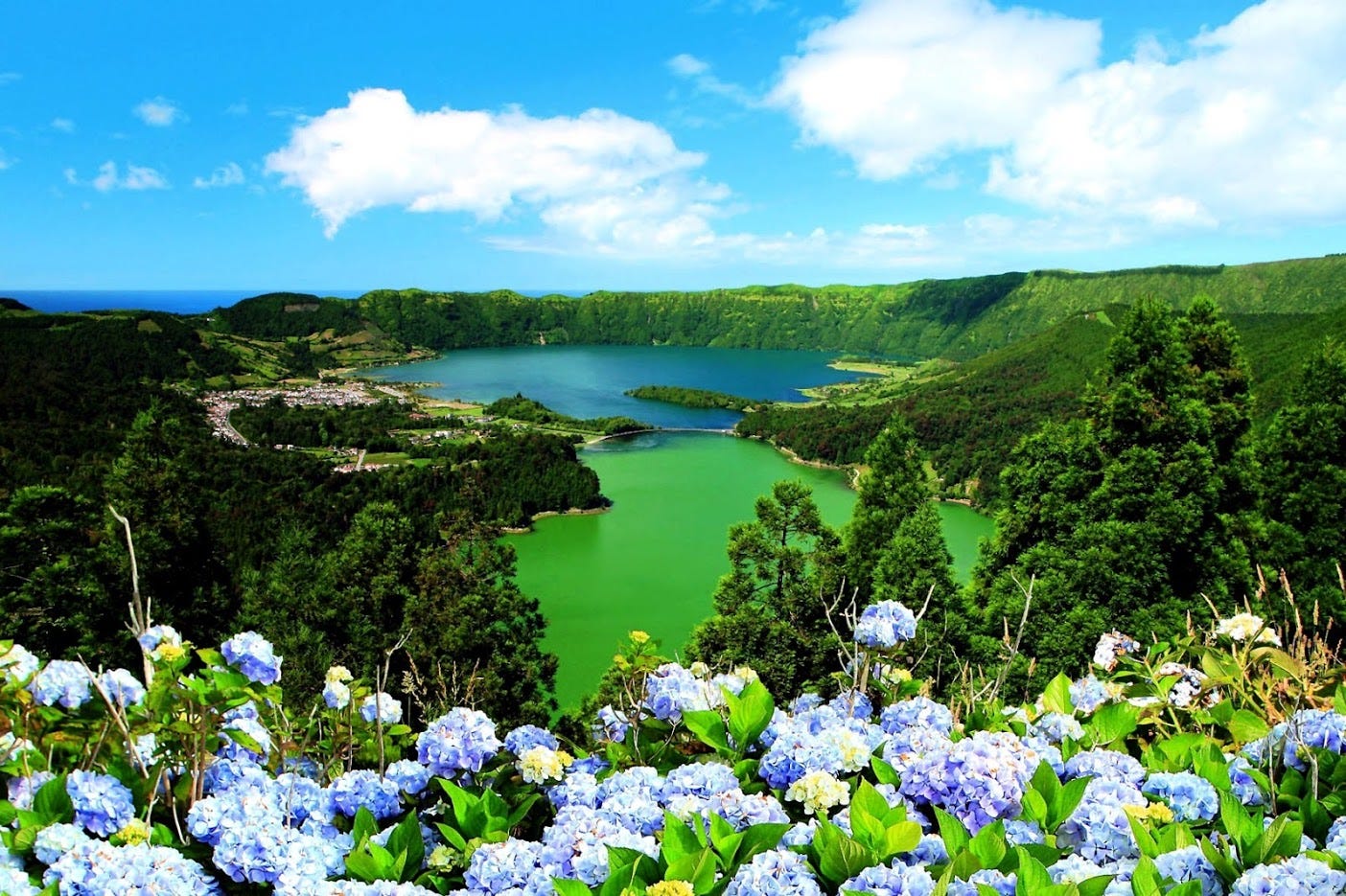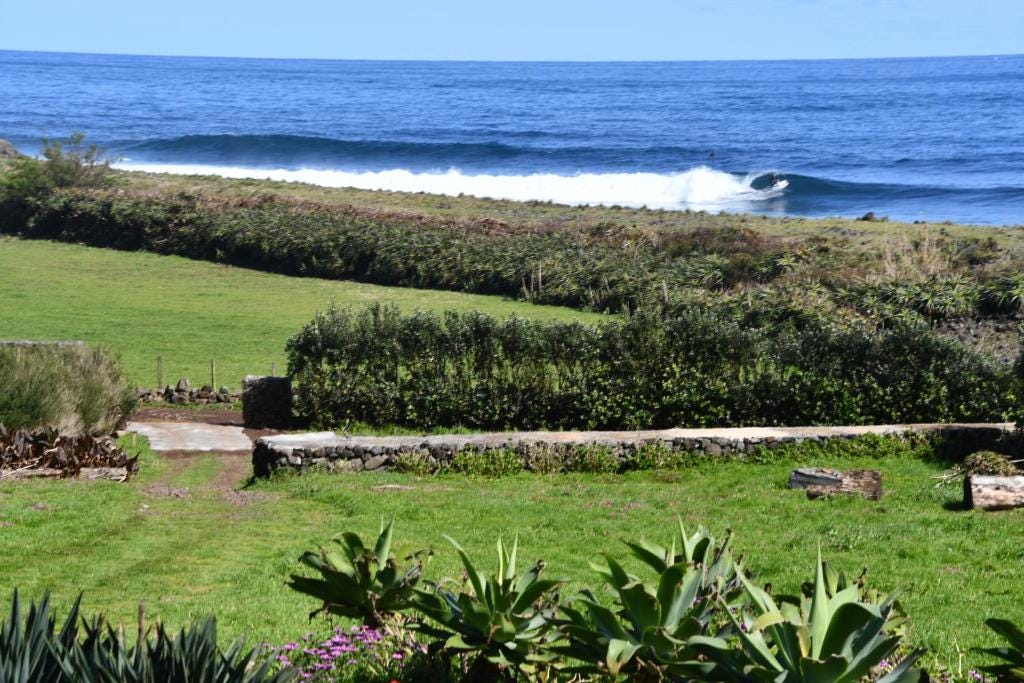My arse is perched on a patch of basalt on the Mid-Atlantic Ridge, at the very place where the Eurasian, African and North American lithospheric plates meet. I’m in a rock pool, in board shorts, facing the setting sun as it liquefies into the North Atlantic Ocean.
In the pool, 75-degree hot geothermal water from a sulphurous spring pours out from under the rocks and mixes with the 21-degree ocean water, providing a perfect hot bath temperature. The taste and feel of the recent hash joint is still swirling in my bloodstream. Some very attractive ladies may, or may not, be slowly lowering themselves into the pool. I raise a cold tin of Sagres beer to my salty lips, smile beatifically and think to myself; you always haven’t made the right life decisions, but at least one of them got you here.
I’m at Ponta da Ferraria, the westernmost point of Sao Miguel, the largest of the nine islands of the Azores. The Azores sit roughly 1,600 clicks west of mainland Portugal, or 4700 kilometres to the east of North Carolina. The Mid-Atlantic Ridge is effectively an underwater mountain range that spines for 16,000 kilometres across both hemispheres. The Azores archipelago is one of just a few nobbles on the spine that nudges above sea level.
The islands have been described as a mix between Hawaii, New Zealand and Ireland. Its subtropical climate with high humidity provides some of the cleanest air on earth. There are active volcanoes, geothermal springs, and caldera lakes that shimmer blue-green as they reflect sunlight and audition for a starring location part in the next Jurassic Park movie. If you don't move quick enough, you might develop the same deep green velvet skin that cloths the interior.
Mind you I didn’t come to the Azores just to rest my skinny white arse on hot rocks or stare at turquoise lakes, I’d come for the waves. That morning I’d surfed the beaches of Santa Barbara, on the north shore of the island. A six-foot swell, a relatively common occurrence, was being met by offshore winds. Across the 500-metre stretch of a black sand beach, random peaks unloaded on shallow sand, detonating in A-frame barrels. And this being the most popular beach on the island, just a 15 kilometre drive away from the capital Ponta Delgardo, on a Saturday, it was crowded. I counted at least 10 surfers over the length of the beach. And they all said hello.
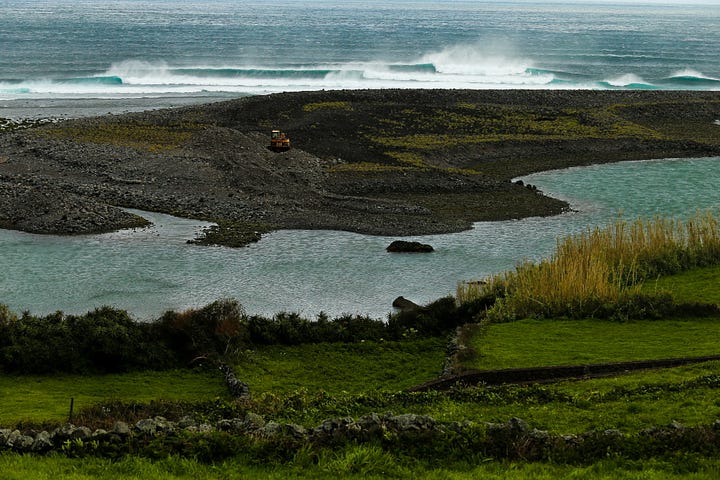
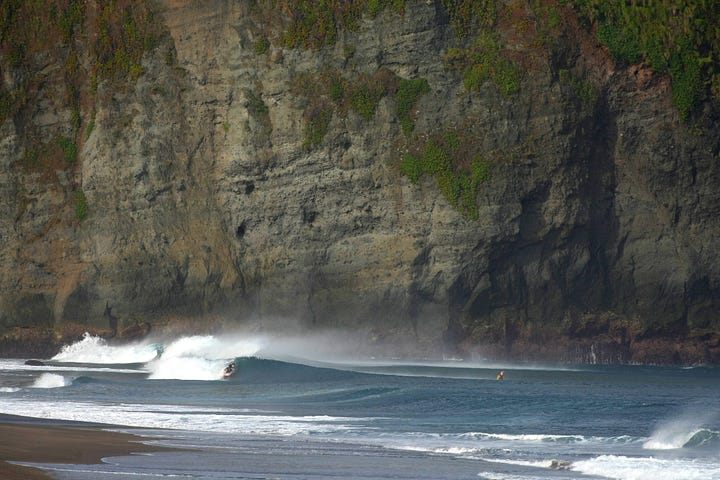
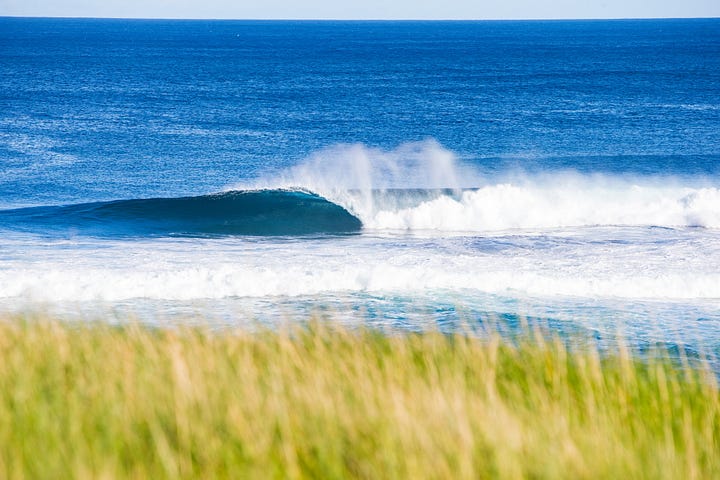
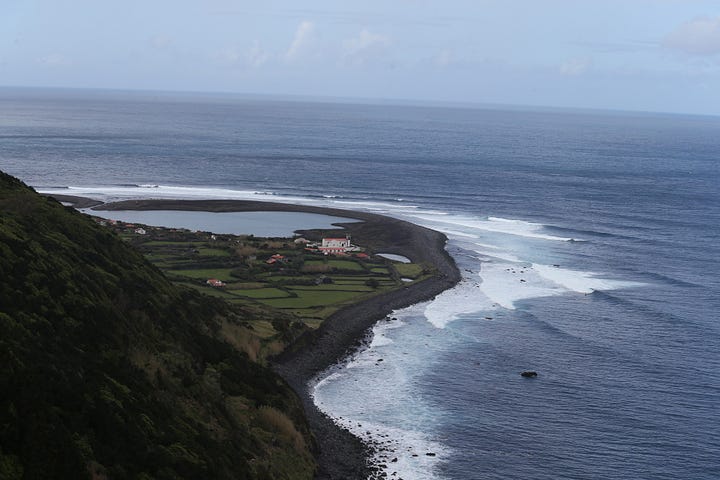
One of those surfers is Joao de Macedo, a Portuguese big wave legend, who made himself a name at Mavericks, and more recently at Nazare. He’s been scoping the Azores for the last seven years, and said he has only just scraped the tip of the iceberg, or volcano, in terms of finding world-class waves.
He pointed to a wave just feathering on a bombie just 500 metres out to sea from the beach at Santa Barbara.
“That wave that has been hiding in plain sight,” said De Macedo. “It’s about a kilometre out from the beachbreak where the QS event is held every year. And yet it has the potential to be one of Europe’s best big wave spots.”
Macedo has also been surfing another potential classic left at Pica de Viola. It’s a pointbreak that is nestled into one of the headland coves on Sao Miguel. You can see it from high on the road above, unlike many of the Azores waves that lie hidden.
“Portuguese surf legend and now coach Jose Seabra had lived on Sao Miguel for a long time and had surfed the left at Pica de Viola on his own,” explained De Macedo. “Jose would surf it from six up to 15 feet, but above that, which is the zone we are interested in, it’s a totally different wave; a real, big wave slab.”
I was more interested in the four-to-five foot zone, and even at that size the wave provides power as it hugs the volcanic rock and winds for 300 yards down a series of gurgling ledges.
“You are searching for diamonds and you have to accept that when exploring the Azores,” says De Macedo. It’s never a guaranteed score. Nature really calls the shots and there’s a ton of logistical issues. It’s a wild, beautiful, and radical place, but that’s a massive part of the attraction.”
And I had only scoped just one of the nine islands. On Sao Jorge, at Fajã de Santo Cristo, four world-class waves, Lago de Linho (Linen Lake), Esquerda da Igreja (Left from Church), Feiticeiras (Sorceresses) and Direita do Passe (Right from the Water flow), all lie within walking distance of each other on one of the most stunning coastlines in all the Azores.
Uniquely these waves can only be accessed quad bike, boat or on foot. You can stay at the Caldeira Guesthouse and Surf Camp, and with a solid swell, be guaranteed Atlantic perfection, with a handful of surfers, or perhaps, on your own.
On Terciera, Santa Catarina, a slab known as the "deadly princess” is one of the most notorious slabs in Europe and has hosted world bodyboarding tour events. On Flores and Pico, more reef breaks slew off in all directions, usually without any human interference.
Back in the rock pool though, even after swimming out into the cooler Atlantic, my core temperature was reaching magma-like levels. Plus it was time for another tin. To the side of the pool, some friendly locals were sizzling strips of primed Azorian beef over a fire and circling a bottle red wine and another fat hash spliff around the group.
The full moon too was making an appearance above the basalt cliffs, offsetting the sun’s fading light and adding lunacy and beauty. Warmed and sated, ecstatic and relaxed, it was time to make move into the humid, just-right-temperatured evening. Tomorrow there would be waves to surf, Azorian air to breathe and calderas to swim. The world is amazing place. And this part of the world is one of its true treasures.

